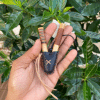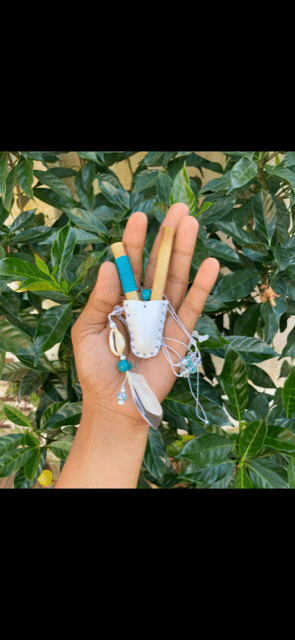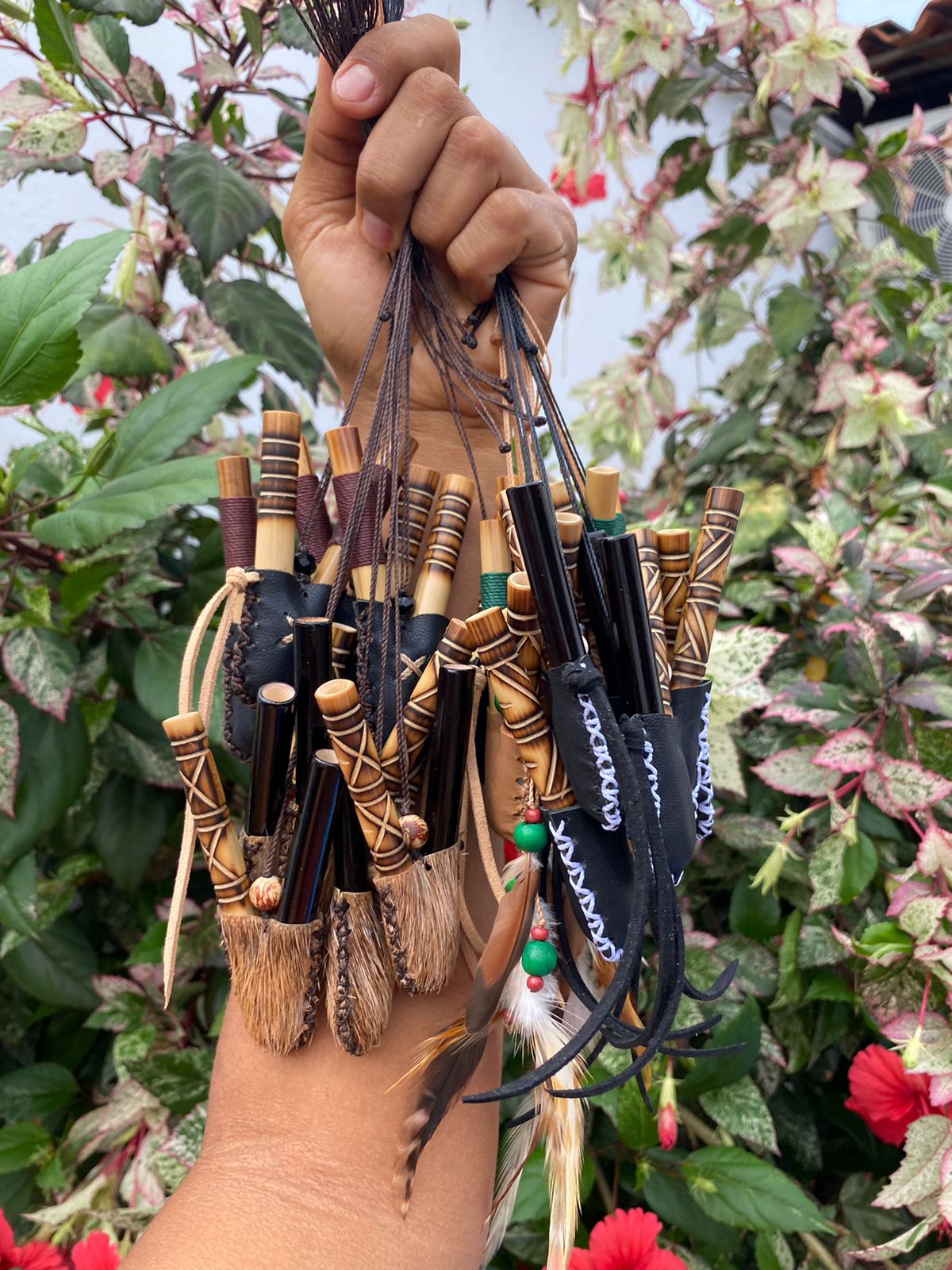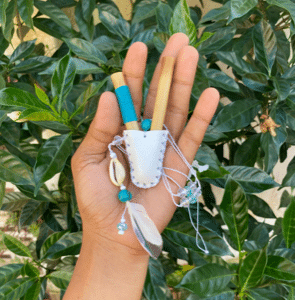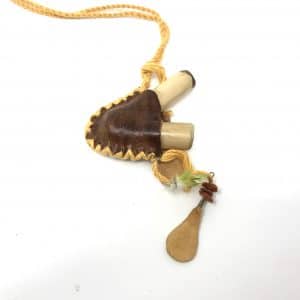Wood and Leather Decorative Kuripe with Brush Cleaner
$57.00
Handmade rapé (pronounced ha-pay or rah-pay) self-applicator made out of wood and leather- comes string and with a brush for cleaning handmade by an indigenous sister in Estrela Brilhante Daime Church in Maranhão, Brazil . We only have a few available so hurry. These won’t last.
3 in stock
The kuripe is a unique type of pipe that is designed to be self-administered, unlike other pipes that require the help of another person to blow the smoke into the user’s nostrils. The kuripe typically consists of a small, narrow tube with one end that is inserted into the user’s nose, and the other end is used for blowing the rapé or other powdered substances into the nostril of the person using it.
Rapé is considered a sacred medicine by these indigenous tribes and is used in various rituals, ceremonies, and healing practices. The experience of using rapé is said to bring clarity, focus, grounding, and a deeper connection to the spiritual realm. Additionally, it is believed to have various medicinal properties and is used for its therapeutic benefits.
It’s essential to understand that these traditional practices and sacred medicines are culturally significant and hold deep spiritual meaning for the indigenous tribes. As such, they should be approached with respect and understanding of their cultural context when encountered or used by outsiders.
[/vc_column_text][/vc_column][/vc_row]| Weight | 0.5 oz |
|---|
Related products
Kuripis (Self Applicators)
Kuripis (Self Applicators)
Kuripe – Snuff Self Applicator Brown Leather with beads and Feathers
Kuripis (Self Applicators)
Kuripis (Self Applicators)
Kuripis (Self Applicators)
Kuripis (Self Applicators)
Kuripis (Self Applicators)
Kuripis (Self Applicators)






 Join the Tribe
Join the Tribe
